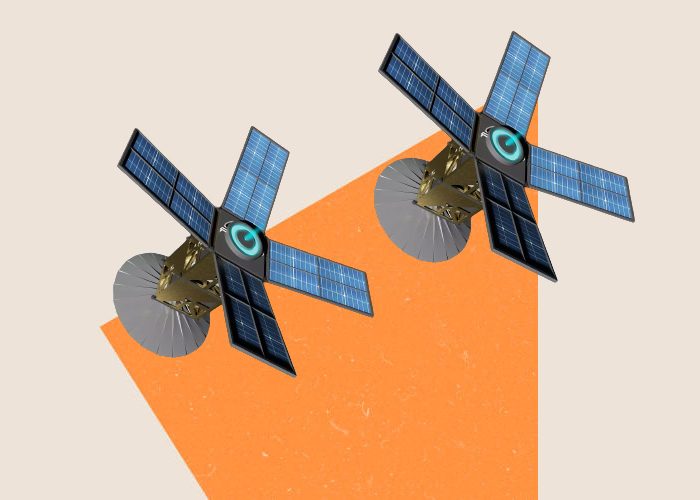
Exploring the transformative landscape and emerging trends revolutionizing India’s connectivity
India has become a focal point for groundbreaking advancements and innovations in the rapidly evolving landscape of satellite internet services. With the ever-increasing demand for reliable internet connectivity, the satellite internet space in India is experiencing a paradigm shift driven by emerging trends.
This comprehensive article explores the transformative factors reshaping the satellite internet industry in India, focusing on key developments that are revolutionizing how we access the internet. From the deployment of satellite constellations to the integration of 5G technology, from advancements in satellite technology to government initiatives for digital inclusion, this article delves into the exciting trends propelling India’s satellite internet space forward.
Increasing Satellite Constellations: Expanding Coverage and Capacity
One of the most significant trends in the satellite internet space is the proliferation of satellite constellations. Traditionally, satellite internet relied on a limited number of geostationary satellites to provide coverage. However, companies like SpaceX, OneWeb, and Amazon’s Project Kuiper are now launching prominent constellations of low Earth orbit (LEO) satellites.
These LEO constellations offer several advantages over traditional satellite systems. They reduce latency and provide faster internet speeds by operating closer to the Earth’s surface. Additionally, their more significant numbers enable improved coverage and capacity, making high-speed internet accessible even in remote areas of India. The increased competition among satellite providers is expected to drive down costs, making satellite internet more affordable and accessible to a broader audience.
5G Integration with Satellite Internet: Enabling Seamless Connectivity
As India gears up for deploying 5G networks, integrating satellite internet with 5G technology holds great promise. 5G networks offer ultra-fast speeds and low latency, while satellite internet ensures connectivity in areas where terrestrial infrastructure is limited or absent.
The combination of 5G and satellite internet can bridge the digital divide, especially in rural and underserved regions of India. It enables seamless connectivity and empowers businesses, educational institutions, and individuals to leverage the benefits of high-speed internet for various applications, including telemedicine, e-learning, and e-commerce.
Advancements in Satellite Technology: Higher Speeds and Enhanced Reliability
Satellite technology has seen significant advancements in recent years, resulting in higher speeds and improved reliability. Companies are developing next-generation satellites with advanced technologies like high-frequency bands, onboard processing capabilities, and optical inter-satellite links.
These technological advancements translate into faster and more reliable satellite internet services in India. Users can enjoy enhanced download and upload speeds, reduced latency, and better overall performance. This progress is vital for supporting bandwidth-intensive applications such as video streaming, cloud computing, and data-intensive research.
Government Initiatives: Promoting Digital Inclusion
The Indian government recognizes the importance of digital inclusion and has taken several initiatives to promote satellite internet connectivity nationwide. The BharatNet project aims to connect over 600,000 villages through an extensive fiber-optic network. However, implementing fiber-optic infrastructure in remote and challenging terrains can be logistically difficult and time-consuming.
Satellite internet is a viable alternative to extend internet connectivity to these areas. The government is actively collaborating with satellite internet service providers to bridge the digital divide and ensure that every citizen can access reliable, high-speed internet services, regardless of geographical location.
Enhanced Data Security and Privacy Measures
As internet usage grows, ensuring data security and privacy becomes paramount. Satellite internet providers focus on enhancing data protection measures to safeguard users’ information and provide secure online experiences.
Satellite networks offer inherent security advantages, such as protection against physical infrastructure vulnerabilities and resistance to cyberattacks targeting terrestrial networks. Moreover, advanced encryption protocols and secure communication channels are being implemented to ensure the privacy and integrity of user data transmitted over satellite connections.
Satellite Internet for Disaster Management and Remote Connectivity
Satellite internet is crucial in disaster management and connectivity in remote or disaster-stricken areas. During natural disasters or emergencies, terrestrial communication infrastructure can be severely damaged or destroyed, hampering rescue and relief efforts.
Satellite-based communication systems can quickly restore connectivity and enable efficient coordination among rescue teams and affected communities. Furthermore, satellite internet helps bridge the connectivity gap in remote regions, empowering businesses, educational institutions, and individuals to thrive in areas with limited terrestrial connectivity.











